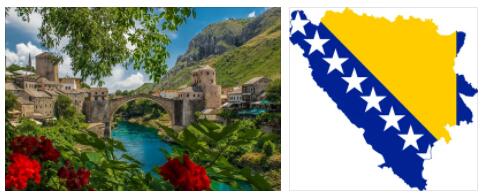Right-wing Radical Parties in Today’s Europe Part II
POST INDUSTRIALIZATION : A key perspective in the analysis of the growing support of right-wing radical parties is the transition to a modern and post-industrial society. Globalization , deindustrialisation and increasing gender equality are part of this perspective. The number of jobs in industry has been sharply reduced, and in many countries women have become better represented in the labor market and more respected in society.
Furthermore, the transition to a more specialized and technologically advanced labor market places higher demands on the employee’s level of education. Groups in society that “lose” on this development seem to support parties with an xenophobic, male chauvinistic and protectionist (protect themselves) party program. More specifically, we see that right-wing radicals mainly get their support from young male workers. However, it is worth emphasizing that in some countries these voters make up only a small proportion of those who support the right-wing radicals.
In Eastern Europe, the transition from communism and authoritarian regimes to capitalism and democracy has had some of the same effect as the modernization process in Western Europe. A good number of voters feel socially marginalized (ignored) and fear what the future will bring.
UNEMPLOYMENT AND DISTRUST : More specifically, many argue that unemployment is a key explanatory factor in understanding the growth of these parties. Unemployment often leads to political distrust and contempt for the established parties, which can give wind in the sails of the right-wing radicals. Especially if they succeed in blaming immigrants for the fact that many are unemployed. Some studies support this theory: Many unemployed people vote for right-wing radical parties and in some places in some periods such parties have gained greater support when unemployment increases.
Some studies point in a different direction: Many right-wing radical parties grew large before the financial crisis and then in countries without mass unemployment. In fact, many of the parties perform poorly when economic issues dominate the political agenda. That the parties do not thrive in times of economic downturn is perhaps not so surprising. After all, economic policy is not at the heart of these parties’ messages. They thrive better when the debate is about cultural, value and identity issues. And in any case, the unemployed make up only a small proportion of the right-wing radical parties’ voter base.
5: Resistance to immigration
INCREASING IMMIGRATION AND SPREAD FRIENDSHIP are another reason for the growth of these parties. Opposition to immigration in general and Islam in particular is a very important mobilization issue among their constituents. However, there is no direct connection between the proportion of immigrants and support for right-wing radical parties. Prejudices are everywhere – even in countries without very many immigrants (Finland and large parts of Eastern Europe).
A study from England also points out that it may not be the proportion of immigrants per se that attracts someone to the right-wing radical message, but rather a segregated pattern of settlement (different groups live in different districts). When different ethnic groups are not associated with each other, this can lead to the perpetuation and perhaps intensification of prejudice and hostility.
TABLOIDIZATION of the media helps to focus on the right-wing radical parties’ favorite issues : political scandals, integration problems and crime. This creates a climate of debate and attention that right-wing radical parties benefit from. The headline “Islam smolders in the suburbs of Paris” in Aftenposten (October 17, 2011) is an illustrative example. In countries such as Austria and Denmark, according to HISTORYAAH, major tabloid newspapers such as Kronen Zeitung and Ekstrabladet have also expressed support for the right-wing radicals’ ideas and proposals. The modern mass media logic is also beneficial for charismatic politicians with the ability to formulate simple answers to complex issues. The Dutch politician Geert Wilders, for example, is known for being a very skilled debater.
6: New ideology
Of course, the parties’ support is also related to the ideology and political message they advocate. It is common to make a rough distinction between
- «Old right-wing radical parties» and
- «New right-wing radical parties».
“Old right-wing radical parties” are characterized by fascist symbols, anti-democratic inclinations and biological racism. Such an ideological platform has very little popular support in today’s Europe, although there are exceptions.
“New right-wing radical parties” have a much “more edible” political agenda and message. They are not against the democratic system, only against the established parties . The claim that all the other parties are really exactly the same and that no one represents “the man in the street”, is one central reason why these parties are often referred to as right-wing populist . Many of their constituents express great distrust of the other political parties and of the political profession.
New right-wing radical parties are also not directly racist, but often wrap the message in more acceptable forms . Traditional anti-Semitism has also been replaced by a more widespread fear of Islam and Muslims – often called Islamophobia . In Norway, surveys have shown that while “only” 24 and 37 percent are skeptical that their children marry a Jew or Hindu, respectively, as many as 57 percent are skeptical if it is a Muslim.












